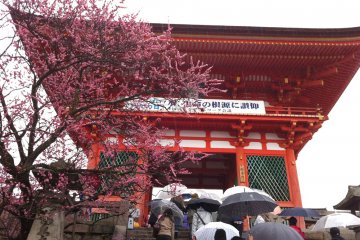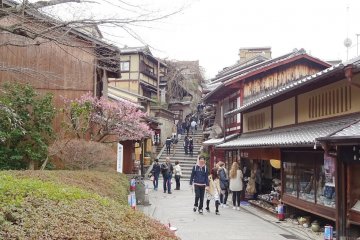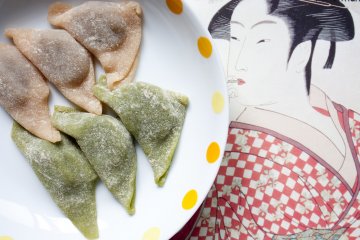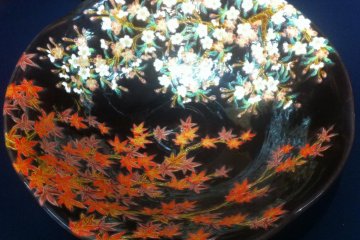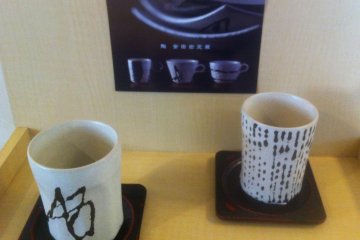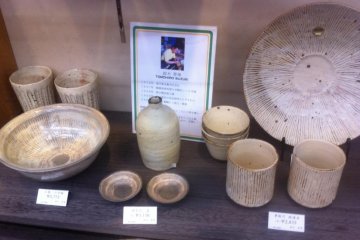Moments away from Kiyomizu dera temple on Sannenzaka, Asahido Gallery has created a space where traditional and up and coming artists can showcase their work.
To many travelers, Kiyomizu only means one thing, the temple at the top of the hill. However, for many Kyoto-ites, Kiyomizu yaki, being the pinnacle of Kyoto ceramics, is the real reason for making the pilgrimage to the end of the cobbled stoned walkway.
It has been 135 years since Asahido started displaying artworks. However, the history of pottery in Kyoto is much older that. In nearby Tamba, pottery making was well known since the Twelfth century, in the Muromachi period. A lot of beautiful home wares originate from Tamba, including tea ceremony utensils. The connection between tea and Kiyomizu yaki is particularly strong. One of the side streets here is called Chawanzaka, or teapot lane.
Today I had the opportunity to meet Hirosada Yasuda, a young up and coming artist who inherited his family’s love of pottery, and remembers fondly making his first piece in his grandparent’s house when he was a child. He also displays his wares in several exhibitions in Kyoto and Shiga. These days he travels far and wide from his childhood home to source unique clays for his home wares and sculptures. I particularly like the modern, simple cups with abstract like designs reminiscent of calligraphy made from Shiga clay. As it takes usually two months to make a batch of cups, it has taken him many years to perfect his designs.
Kato san, the manager at the Gallery guides me around the many traditional plates on display. I particularly liked the painting of a bamboo forest, by Matsuzaki Mitsuo, an artist in his late sixties. The painting is actually made of four plates joined together, like a traditional screen painting. The flat plates take many attempts to complete, and the artist would have to throw away many attempted plates before he makes the perfect plate. The color may not be right, or the plate may not be the right shape when they come out of the kiln. Furthermore, he paints in a dot like manner many times over the same spot, painting, firing, and painting again over six months to give a three dimensional effect.
I am then led upstairs to the gallery of classical vases and plates. Framed by the round window, there is a beautiful view of the cherry blossoms, making a pleasant backdrop between nature and man’s interpretation of it, in the many ceramics on display. I am reminded of a poem by Otagaki Rengetsu in the eighteenth century, who wrote:
“Lovely display
Just as in days of yore,
might this not be a future autumn moon,
this white chrysanthemum flower”
Today, Asahido continues to serve its customers as a store specializing in Kyoto and Kiyomizu pottery. It also showcases artworks from other prefectures, such as kettles and other Nambu ironware, as well as ukiyo e woodblock prints, tapestries and chopsticks. There is an annex displaying contemporary works, and I can read about the history of each of the artists. This is a convenient place to acquire a heirloom or a centerpiece for your home or work place. These items start from 2,000 yen. While it is more expensive than the usual souvenir, the workmanship and design makes it very good value. For overseas customers, they can sell duty free and even deliver the items anywhere in the world.




